
 Flash News
Flash News
An elderly woman in Lushnja dies after being stabbed in the neighborhood ambulance
After Tirana, KAS also decides to open the ballot boxes in Dibër
The murder saga, Alibej: It started after I gave Talo Çela's location
Albania-Serbia match/ Tirana in "total lockdown": 2000 police officers, anti-drone checks and traffic restrictions
Etel Haxhiaj challenges US police during arrest of immigrant, charged with assault
Tirana Pyramid “symbol of exclusion” for people with disabilities
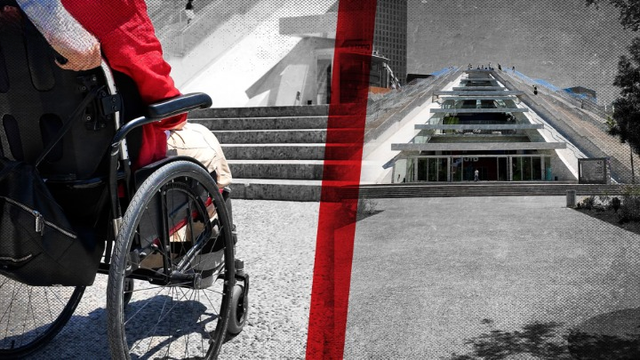
On Wednesday morning, Suela Lala, an activist for the rights of people with disabilities, stood waiting, next to her father, near the reconstructed Pyramid of Tirana. A building invested with millions of euros, a symbol of urban transformation, but which for Suela remains a structure that has not been properly conceived and operated: a symbol of exclusion.
The newly-started heat in Tirana did not prevent Suela from keeping her promise to walk with her father through the Tirana Pyramid building, which was returned to the capital two years ago, after being surrounded for three consecutive years under a reconstruction project.
Unlike me, for Suela, a citizen with limited mobility, going to the Pyramid and visiting it from corner to corner is a challenge, which is also carried out with difficulty by her companion: her father.
Barriers were noticed at its front entrance, where the stairs were located. No signage is visible to indicate where the infrastructure that allows access for people with disabilities is, so you have to walk around to notice two side entrances where the relief is such that it allows the passage of a wheelchair.
"From the way it was conceived, it is a 'par excellence' object of exclusion for people with disabilities. We managed to get in here through a side entrance, which was not very simple. Many labyrinthine ramps, without specific signage and of course not in every environment you have access", Suela tells Citizens.al
Figures for each region, how many voters were absent in the May 11 parliamentary elections
For Suela, the lack of access to the main entrance of the pyramid, but only to the side ones, is a form of exclusion, isolation and a way to "reduce people."
"The pyramid is a symbolic object of exclusion, not of inclusiveness and unity. It should have brought this model in order to break the idea of why it was built, that cult of the individual and the overvaluation of one man above all others," says Suela.
The two side entrances designed for people with disabilities do not have side rails, making independent movement for people with disabilities impossible.
"Even if there were ramps, there were no handrails for the ramps so that you could move safely. At the entrance, for example, the part where you had to go was steep and dangerous," Suela shares her experience.
There are two ramps inside the pyramid, but you have to walk in a winding path around the cubes located inside, made more difficult by the lack of signage for people with disabilities.
Godina ka edhe dy ashensorë, të cilët sikurse edhe tualetet funksionojnë me kartë dhe kod, ndaj për këtë duhet të vësh re punonjësit aty pranë.
Mirëpo, edhe nëse ngjitesh me ashensor në katin e fundit, një tjetër shkallë nuk të lejon të lëvrosh për të parë qytetin nga lart.
“Ne e pamë që për të vajtur në pikën e vështrimit, lart, mund të merrje ashensorin, ashensori ishte me cip, pra jo i hapur për të gjithë qytetarët dhe pastaj nuk mund të zbrisje, kishte shkallë për të arritur atë pikën e vrojtimit”, rrëfen Suela.
Shqipëria ka një kuadër ligjor që detyron ndërtuesit të ndërtojnë në mënyrë gjithëpërfshirëse, duke i bërë godinat të aksesueshme nga të gjithë, fëmijë, të moshuar dhe persona me aftësi të kufizuar.
Sipas ligjit për planifikimin e territorit, të gjitha ndërtesat, hapësirat publike duke përfshirë parqet, sheshet dhe rrugët duhet të jenë të përshtatura për personat me aftësi të kufizuar.
Ndërsa, mes të tjerash thuhet se për ndërtesat e reja apo ato në proces rikonstruksioni është kusht që për të marrë lejen e ndërtimit dhe certifikatën e përdorimit të përshtaten me infrastrukturë për personat me aftësi të kufizuar.
Situata në piramidë sipas Suelës është në shkelje të ligjit.
“Te ndërtesat edhe të reja ka shkelje të dy parashikimeve ligjore, një që kërkon kontrollin për aksesueshmërinë në momentin e marrjes së lejes së ndërtimit dhe pastaj në dhënien e certifikatës së përdorimit që duket që nuk janë respektuar”, argumenton Suela Lala.
Po ashtu, sipas vendimit të vitit 2015, nr.1074, ndalohet dhënia e financimeve nga ana e shtetit apo enteve publike dhe jopublike/donatorëve për ndërtimin e një vepre që ofron shërbim publik nëse nuk përmbush kërkesat sa i takon aksesueshmërisë për personat me aftësi të kufizuara.
“Nuk duhen shpenzuar para publike ose të donatorëve për objekte të cilat janë përjashtuese në thelb”, shton më tej Suela.
Shqipe Berisha, drejtuese e Qendrës së Piramidës që menaxhon godinën u shpreh për Citizens.al se Piramida ofron qasje për personat me aftësi të kufizuara.
“Për të hyrë në qendër ka [akses], janë dyert anësore që janë për personat me aftësi të kufizuar, që kanë atë si rrugë. Jo hyrje ballore, por hyrjet anësore. Për në majë të piramidës kemi ashensorë, por duhet të drejtohen me anë të rojës që është te dera, për t’ju shoqëruar me ashensor”, deklaroi Berisha.
Ndërsa për mungesën e sinjalistikës për personat që nuk shikojnë, ajo pranoi mungesën e sinjalistikës, por u shpreh se nuk është personi kompetent për t’u përgjigjur pasi janë arkitektët ata që kanë bërë planin e ndërtesës.
“Për atë po punojmë tani, po bëhet plani i sinjalistikës tani, sepse është bërë baza, tani po bëhen edhe gjërat që po mungojnë. Shpresoj ta mbyllim deri brenda verës planin e sinjalistikës totale”, deklaroi Shqipe Berisha.
The project for the revival of the Pyramid was carried out by the Dutch studio MVDRV, led by architect Wini Maas, described as an architect close to the government, who has won a number of public and private projects in Tirana, such as the "DownTown One" tower, the Toptani center and the "Tirana Rock" tower.
The project to revive the Pyramid has cost 1.6 billion lek, an investment carried out by the Municipality of Tirana and the Albanian-American Development Foundation (AADF)./ Erisa Kryeziu Citizens.al
Latest news

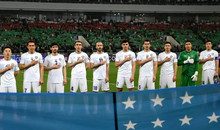
Uzbekistan qualifies for the World Cup for the first time
2025-06-05 21:14:35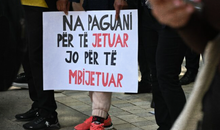
Index: Albania among countries that consistently violate workers' rights
2025-06-05 20:53:35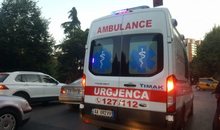
Accident in Burrel, two vehicles collide, 6 injured
2025-06-05 20:31:27
Discover foods that help you relieve stress
2025-06-05 20:16:34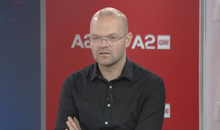
Kalaja: I have a video where votes were taken from the DP and given to the PS
2025-06-05 19:58:04

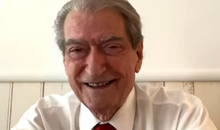
Berisha: The international community does not accept the farce
2025-06-05 18:57:18
Trump after conversation with Xi: US and China will resume trade talks
2025-06-05 18:35:36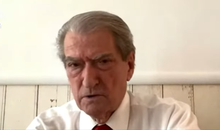
Berisha on May 11: 28 MPs were under the patronage of drug cartels
2025-06-05 18:15:44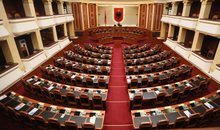
The session in the Assembly closes, the majority approves the draft laws alone
2025-06-05 17:55:21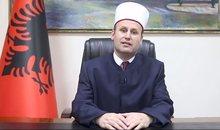
Kurban Bajrami, kreu i Komunitetit Mysliman të Shqipërisë uron besimtarët
2025-06-05 17:29:17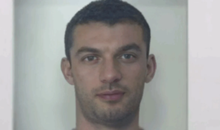

Media at OSCE conference: Organized crime has captured the Albanian state
2025-06-05 16:50:41
Car hits 75-year-old man at white lines in Vlora
2025-06-05 16:42:48
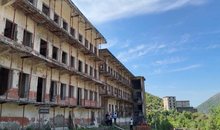
Protest in Spaç, after restoration interventions
2025-06-05 16:27:49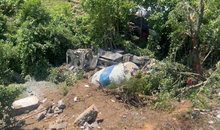
Photo/ Concrete mixer falls into abyss in Ulëz, driver rushed to hospital
2025-06-05 16:15:15
May 11/ Këlliçi: There are attempts to influence the final OSCE-ODIHR report
2025-06-05 16:06:38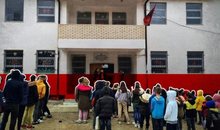
Immigration is emptying schools and universities
2025-06-05 15:53:38
Plague breaks out, Kosovo bans import of sheep and goats from Shkodra and Kukësi
2025-06-05 15:48:23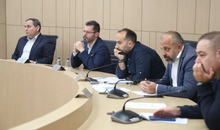
After Tirana, KAS also decides to open the ballot boxes in Dibër
2025-06-05 15:31:03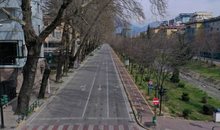
Tirana is "paralyzed" again, here are the roads that will be blocked tomorrow
2025-06-05 15:20:12
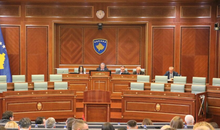
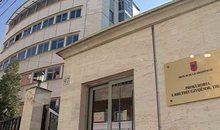

Serbia is coming to Albania tomorrow, here's where it will be accommodated
2025-06-05 14:24:43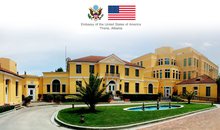
US Embassy updates visa appointment system: More flexibility for applicants
2025-06-05 14:21:01
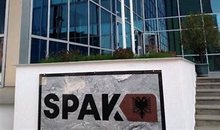
Drug trafficking with "tentacles" in Europe, GJKKO seals prison for 9 arrested
2025-06-05 13:39:35
Deserting from the socialist ranks, Erion Braçe "becomes" a Democrat
2025-06-05 13:23:49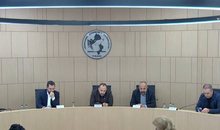
May 11 elections, KAS decides on a full recount of votes in Tirana
2025-06-05 13:22:28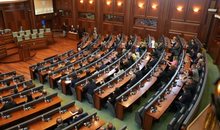
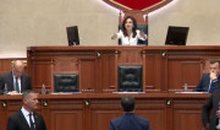
Clashes in the Parliament/ Elisa Spiropali expels Flamur Noka from the session
2025-06-05 13:04:42
A Girl, Otherwise, A Boy
2025-06-05 12:57:30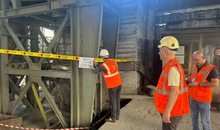
Accident at the "Albchrome" factory in Elbasan, three people arrested
2025-06-05 12:54:40


Berisha: The law of farce is that the dictator's votes are always increasing
2025-06-05 12:19:16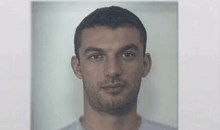


The murder saga, Alibej: It started after I gave Talo Çela's location
2025-06-05 11:45:27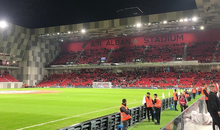
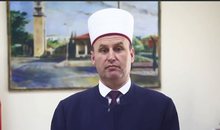
Muslims celebrate Eid al-Adha, KMSH announces where prayers will be held
2025-06-05 11:24:50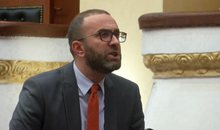
Bardhi: The EU delegation said that crime controlled the elections in Elbasan!
2025-06-05 11:16:51


Journalists were censored by Spiropali, AGSH: Fraud and institutional propaganda
2025-06-05 11:00:20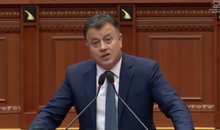
Noka-majority: The foundations of your power rest on the bought vote
2025-06-05 10:54:00
Analysis: Peace between Russia and Ukraine, further away than it seemed
2025-06-05 10:51:57

Serious in Austria/ 35-year-old Albanian dies at work
2025-06-05 10:21:00

They produced and sold cannabis, 2 brothers arrested
2025-06-05 09:50:30

Guard employee commits suicide with service weapon
2025-06-05 09:15:00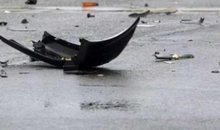
Accident in Fier/ Car collides with an agricultural vehicle, 3 people injured
2025-06-05 09:08:55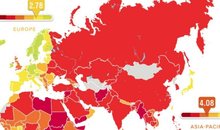
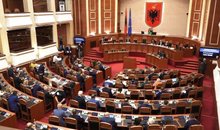
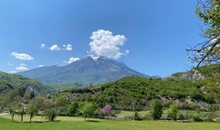
Parashikimi i motit për sot
2025-06-05 08:31:59
HOROSCOPE/ Here's what the stars have predicted for each sign
2025-06-05 08:16:17
Morning Post/ In 2 lines: What mattered yesterday in Albania
2025-06-05 07:52:36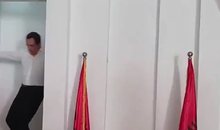
Video/ Abin Kurti narrowly escapes, almost falling down the stairs
2025-06-04 22:54:08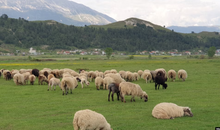
The first case of small cattle plague in the country is confirmed
2025-06-04 22:36:54

Blushi: The person who kidnapped Meta became police chief
2025-06-04 21:45:24
"Fraud" with the forgiveness of State Police fines!
2025-06-04 21:15:22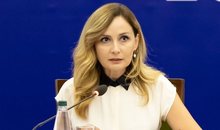



"The real reason why young Albanians like me are coming to the UK illegally"
2025-06-04 20:07:39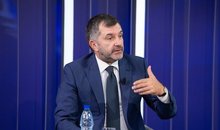
Government opens a legal path for investments in Army properties
2025-06-04 19:49:25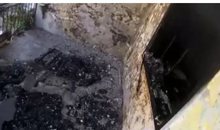
Elderly woman forgets stove on, house burns down in Vlora
2025-06-04 19:46:42
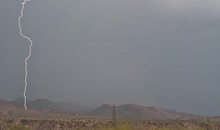
Ersekë/ Elderly man struck by lightning, dies on the spot
2025-06-04 19:12:55
Trump calls Putin, warns Ukraine that Russia will respond to attack on airbases
2025-06-04 19:05:56
Zelensky's Chief of Staff Meets with Secretary Rubio in Washington
2025-06-04 18:53:37

Rama opens a legal "path" for investments in Army properties
2025-06-04 18:41:33
How to think like a Stoic
2025-06-04 18:19:02

May 11th Elections/Balliu: The European Parliament condemned the electoral farce
2025-06-04 18:05:14


Tirana Pyramid “symbol of exclusion” for people with disabilities
2025-06-04 17:32:27
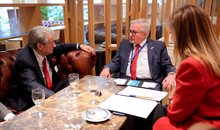


SPAK sends Evis Berberi, Belinda Balluku's right-hand man, for trial
2025-06-04 16:39:23

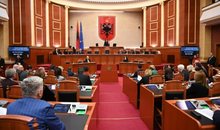
Reporting to the Parliament of independent institutions postponed indefinitely
2025-06-04 16:11:48
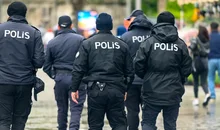
Turkish court jails five mayors of largest opposition party
2025-06-04 15:56:26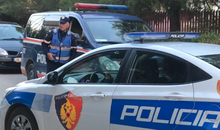



KAS vendos hapjen e 229 kutive të materialeve zgjedhore të Qarkut Vlorë
2025-06-04 15:04:47
